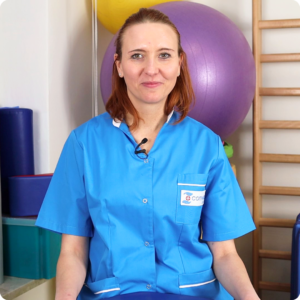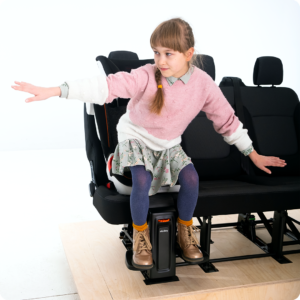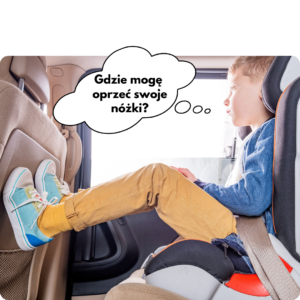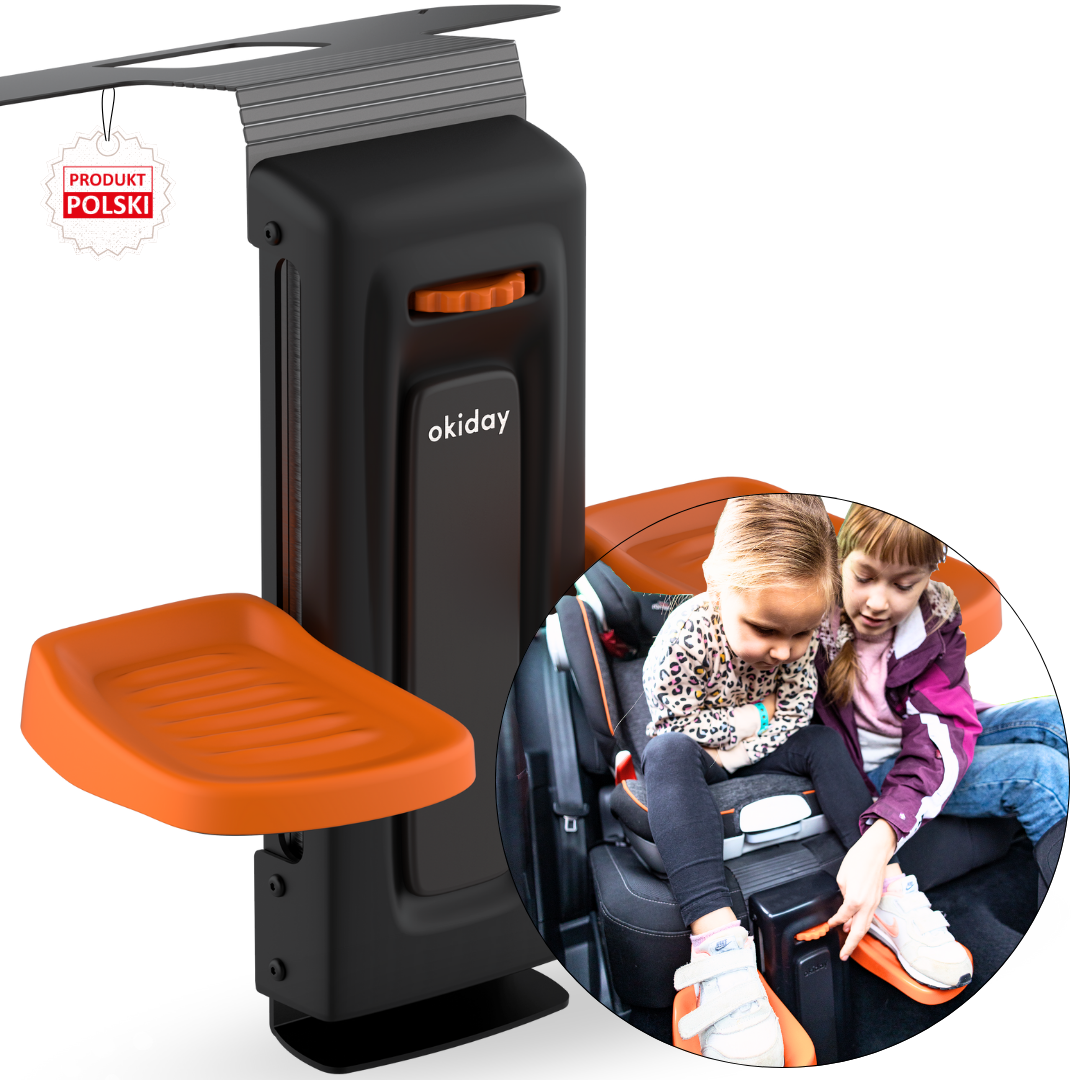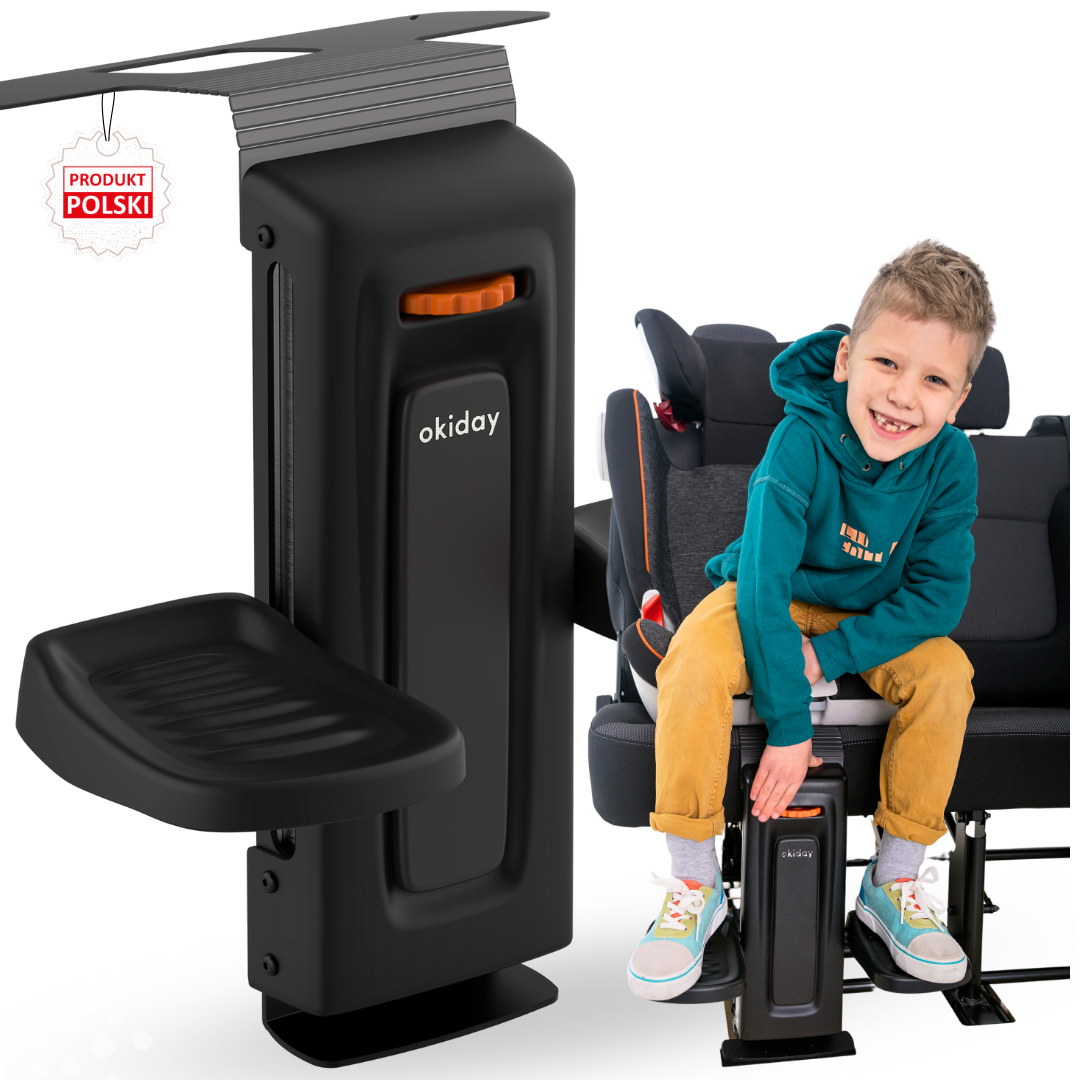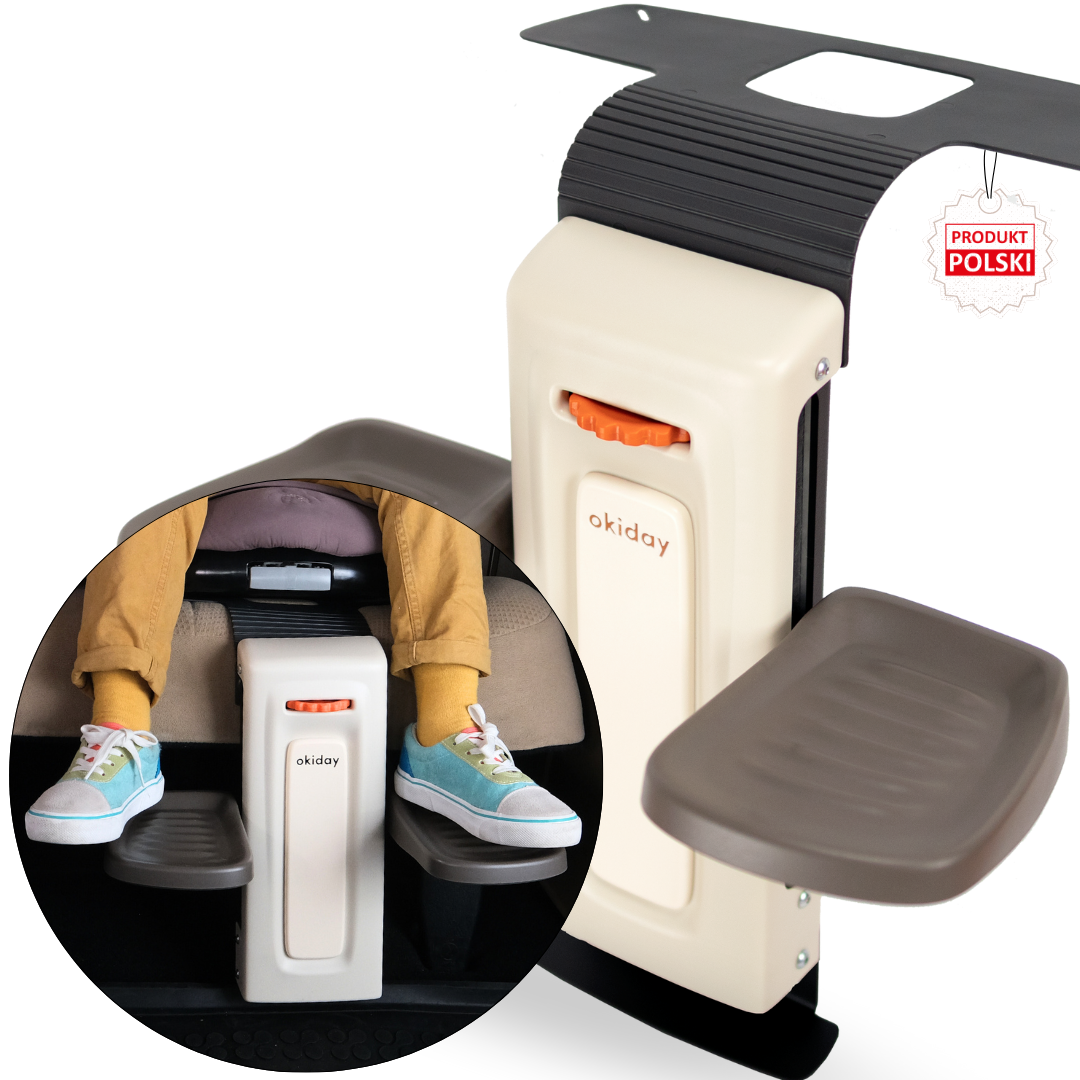Footrest for the car seat – check out how we test them!
Did you know that the latest car seats are tested according to Regulation 129.03? We’ve also tested our footrest for the car seat in compliance with this regulation.
One of the tests was the dynamic test, also known as the crash test.
It is essential to demonstrate that the footrest, regardless of its weight, will be safe. This test primarily checks the durability of the footrest’s mounting system. The test involves accelerating the test cart to a speed of about 50 km/h, followed by sudden braking to simulate a collision. It is a very demanding test. Every tiny element experiences enormous overloads. Components bend or break. As a result of the test, no sharp edges can be created that could endanger the child. Achieving a positive result is very challenging. The test often needs to be repeated because something went wrong. A positive result in the crash test informs you that everything has been thoroughly checked and the product is safe for you and your child!
Every element placed in the car becomes heavier during sudden braking, which can pose a potential hazard. Imagine a small pebble. When you hold it in your hand, nothing happens, but if you throw it at a window, the glass will shatter…
The same goes for footrests. During braking, they can become a potential hazard for you and your loved ones, which is why all tests and certifications are so important.
Did you know that the OKIDAY footrest can be attached in two ways?
– To the ISOFIX points using special hooks,
– And to the floor using strong Velcro.
This combination ensures that the footrest remains in place even in the event of a collision or sudden braking. Only the OKIDAY footrest features a dual mounting system. This is a double guarantee for you!
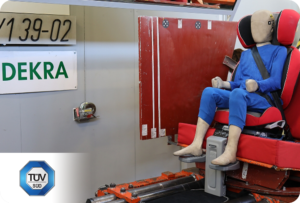
Another test – a test of endurance!
in which the strength of the entire footrest structure is checked. It happens too often that manufacturers’ declarations are far-fetched. It is enough to look at something, touch it or press it to make us question its behavior.
What is the difference between an endurance test and a crash test?
– in the crash test, we mainly check the footrest mounting system. Nothing can break, all mechanisms must remain fully operational after the test. In a dynamic test, all force is concentrated horizontally. Here we mainly look at how the attached footrest behaves. We check whether the moving footrest or any part of it is safe for passengers and, above all, for your child!
– in the endurance test, we concentrate all the force vertically on the supports on which the child stands. This is a destructive test because it tests the ultimate strength of the entire footrest structure. The force simulating the mass of a jumping child is applied using a special punch
– on both supports under the child’s feet (i.e. we simulate the child standing on two legs on the footrest)
– and only on one side of the footrest (asymmetric load – the most destructive).
The asymmetric load simulates the behavior of a child who, when getting into a car, presses on the edge of the footrest, causing enormous stresses that destroy most of the structure.
This is why manufacturers of other footrests exclude the possibility of standing on their footrests, because their structures are not strong enough to support the weight of an “exuberant” child 😉
Adults stood on the OKIDAY footrest and the footrest still worked 😉
Another problem is “declarations”, without objective evidence, without tests that could confirm the declared durability!
… empty declarations … and yet our children are living and energetic beings!
What happens when a child stands on a footrest and the support under his feet breaks? After all, cracking plastic or another weak part can severely injure our child who unknowingly presses too hard on the footrest?
Avoid such situations – choose a footrest that has been tested in a durability test!
Rollover simulation
Do you know what will happen if (knock on wood) your car rolls over? Everything you put in the car that isn’t properly secured becomes a huge threat to all passengers. All loose items in the vehicle will move in every direction during a rollover, bouncing off us multiple times, causing injuries and bruises!
That’s why rollover simulation is so important. It checks whether items, like a footrest, stay in place when the vehicle flips “upside down.” I know it’s hard to imagine, so watch this video that shows everything in slow motion 😉
When choosing a footrest for your child’s car seat, make sure it has undergone the mentioned tests!
Another equally important issue is whether the tests and certifications are conducted in well-known and accredited research facilities. Why is this so important?
Unfortunately, not all tests guarantee your safety. Those conducted in laboratories without accreditation do not give you any assurance that the tested product is safe. It gets even worse when the product has no tests at all, and the data about the product is based solely on the manufacturer’s declaration…
So, pay special attention to whether information such as the product’s durability has been confirmed by tests or is merely a manufacturer’s declaration!
Every time we talk about a crash test, where we simulate an accident, or when we talk about a durability test, where we check the strength of a child’s footrest, or conduct a rollover simulation – such a test should be performed in an accredited facility!
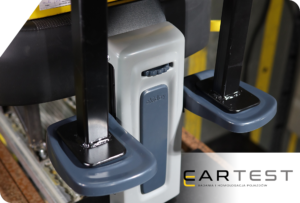
Accreditation is nothing more than proof that:
– Technicians will properly check the measuring equipment used during the tests and ensure that the measurements taken meet the requirements of standards and are reliable.
– The personnel conducting the tests have the appropriate qualifications and can be trusted, as your safety depends on the results of these tests.
– Finally, the quality management system in an accredited laboratory meets international requirements and standards, guaranteeing, among other things, the repeatability of the tests conducted.
Therefore, conduct footrest tests for the car seat in accredited testing laboratories to ensure they are reliable!
It is important that key product features related to safety and durability are confirmed by tests conducted in accredited research units such as TÜV SÜD, TÜV NORD, DEKRA, CARTEST, ITS, and others.
Check out OKIDAY footrests for child car seats – they are a reliable, durable, safe and proven solution for many years.
READ ALSO
